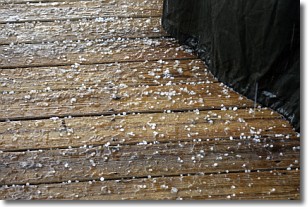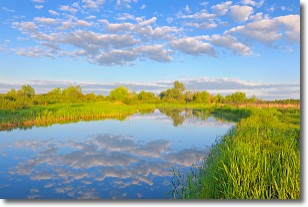Weather Alert in New Mexico
Red Flag Warning issued May 13 at 4:27AM MDT until May 13 at 9:00PM MDT by NWS Albuquerque NM
AREAS AFFECTED: Northwest Plateau
DESCRIPTION: ...RED FLAG WARNING IN EFFECT TODAY FROM 11 AM TO 9 PM FOR THE NORTHWEST PLATEAU; WEST CENTRAL MOUNTAINS, BASIN, AND RANGE; MIDDLE RIO GRANDE VALLEY; AND THE SANDIA AND MANZANO MOUNTAINS DUE TO STRONG WIND AND LOW HUMIDITY... ...FIRE WEATHER WATCH IN EFFECT WEDNESDAY FROM 11 AM TO 9 PM FOR THE NORTHWEST PLATEAU; WEST CENTRAL MOUNTAINS, BASIN, AND RANGE; MIDDLE RIO GRANDE VALLEY; AND THE SANDIA AND MANZANO MOUNTAINS DUE TO STRONG WIND AND LOW HUMIDITY... .Strong winds and very low humidity are expected today and Wednesday as an upper level trough passing north of New Mexico steers the jetstream over the state. Updated forecasts indicate high fire danger will continue to spread, so the Red Flag Warning and Fire Weather Watch have been expanded to include the Northwest Plateau and all of the Sandia and Manzano Mountains. The most critical fire weather conditions are expected today, when winds will be the strongest and the high temperature will climb as much as much as 10 degrees above average. Wind speeds will weaken some on Wednesday and temperatures will fall up to 8 degrees compared to today, but strong instability will persist and there will only be a modest decrease in mixed layer depth on Wednesday. The National Weather Service in Albuquerque has issued a Red Flag Warning...which is in effect from 11 AM this morning to 9 PM MDT this evening. A Fire Weather Watch has also been issued. This Fire Weather Watch is in effect from Wednesday morning through Wednesday evening. * AREA AND TIMING...Northwest Plateau (Zone 101) today and Wednesday from 11 AM to 9 PM. * 20 FOOT WINDS...For today, southwest 20 to 30 mph with gusts up to 40 mph. For Wednesday, west 15 to 30 mph with gusts up to 40 mph. * RELATIVE HUMIDITY...For today, 9 to 12 percent. For Wednesday, 10 to 15 percent. * IMPACTS...Any fires that develop will likely spread rapidly. Outdoor burning is not recommended.
INSTRUCTION: Please advise the appropriate officials or fire crews in the field of this Red Flag Warning. Please advise the appropriate officials or fire crews in the field of this Fire Weather Watch.
Want more detail? Get the Complete 7 Day and Night Detailed Forecast!
Current U.S. National Radar--Current
The Current National Weather Radar is shown below with a UTC Time (subtract 5 hours from UTC to get Eastern Time).

National Weather Forecast--Current
The Current National Weather Forecast and National Weather Map are shown below.

National Weather Forecast for Tomorrow
Tomorrow National Weather Forecast and Tomorrow National Weather Map are show below.

North America Water Vapor (Moisture)
This map shows recent moisture content over North America. Bright and colored areas show high moisture (ie, clouds); brown indicates very little moisture present; black indicates no moisture.

Weather Topic: What is Sleet?
Home - Education - Precipitation - Sleet
 Next Topic: Snow
Next Topic: Snow
Sleet is a form of precipitation in which small ice pellets are the primary
components. These ice pellets are smaller and more translucent than hailstones,
and harder than graupel. Sleet is caused by specific atmospheric conditions and
therefore typically doesn't last for extended periods of time.
The condition which leads to sleet formation requires a warmer body of air to be
wedged in between two sub-freezing bodies of air. When snow falls through a warmer
layer of air it melts, and as it falls through the next sub-freezing body of air
it freezes again, forming ice pellets known as sleet. In some cases, water
droplets don't have time to freeze before reaching the surface and the result is
freezing rain.
Next Topic: Snow
Weather Topic: What are Stratocumulus Clouds?
Home - Education - Cloud Types - Stratocumulus Clouds
 Next Topic: Stratus Clouds
Next Topic: Stratus Clouds
Stratocumulus clouds are similar to altocumulus clouds in their
fluffy appearance, but have a slightly darker shade due to their additional mass.
A good way to distinguish the two cloud types is to hold your hand out and measure
the size of an individual cloud; if it is the size of your thumb it is generally
an altocumulus cloud, if it is the size of your hand it is generally a
stratocumulus cloud.
It is uncommon for stratocumulus clouds to produce precipitation, but if they do
it is usually a light rain or snow.
Next Topic: Stratus Clouds
Current conditions powered by WeatherAPI.com




